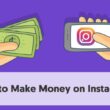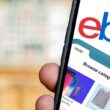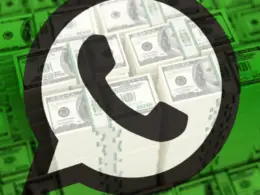So, the most apparent method on how to earn money from YouTube views is through advertising. However, it is not the only way to make money on YouTube.
Because there are a lot of methods or ways to make money on YouTube. YouTube makes up half of the internet population, with over 1.9 billion monthly users. Nonetheless, every minute, 500 hours of video are uploaded to the site.
So you already know that this post isn’t going to be about how easy it is to buy a Swiss watch using ad money generated by your YouTube views. Though you could probably rent one if you have millions of views. Don’t do it.
Is it possible to be paid for posting videos to YouTube?
YouTube does not compensate content producers for the videos they post. Videos aren’t monetized by default, either.
You must activate monetization in your YouTube account settings in order to start generating money on YouTube. You may join the YouTube Partners Program or have your content displayed on YouTube Premium from there.
How do you monetize your YouTube channel?
Aside from the millions of dollars and subscribers gained, there are a few takeaways from Forbes’ list.
Even if a YouTube channel does not have millions of followers, it may be monetized. Your earning potential isn’t only decided by the number of subscribers and views you have, but also by the degree of interaction you produce, the niche you cater to, and the income channels you pursue. That isn’t to suggest that the number of subscribers isn’t important.
Who will subscribe to your YouTube channel?
You’ll be in a fantastic position to monetize content in a number of ways after you’ve built your own following. However, knowing who your target audience is can help you make the most of your possibilities.
The narrower your channel is, the better position you’ll be in to work with advertisers wanting to target certain demographics, according to several YouTubers looking to monetize.
You should pay special attention to:
You’ll have a better knowledge of your own audience and be able to deal with companies more effectively if you have this demographic data. Your YouTube statistics can provide all demographic information, but if you want to compare your channel to others, use a service like Social Blade.
With that out of the way, we can go on to discussing the many ways your YouTube channel may generate revenue.
Continue reading to learn about three simple ways to monetize your YouTube channel. Namely:
How to earn money from YouTube views
Now for some detailed tips on how to earn money from YouTube views.
1. Join the YouTube Partner Program
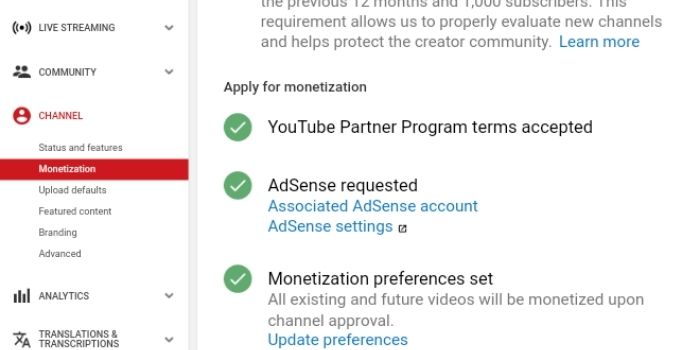
The YouTube Partner Program allows regular YouTubers to get access to exclusive YouTube features.
To make money on YouTube, you don’t need to be a partner (simply setting up an AdSense account and collecting views would be enough), but becoming a Partner makes things a lot simpler.
YouTube Partners may earn money from a variety of sources, including advertisements, YouTube Premium subscription fees, and features that directly affect your viewers’ wallets, such as Super Chat, channel subscriptions, and the goods shelf (more on these later.)
Step one: Create a channel
Don’t worry, we’ve got you covered with a useful guide. ‘How to Create a YouTube Channel’ is the title of the article.
Step two: Make your YouTube channel successful enough to qualify for the YouTube Partner Program.
A minimum of 1,000 members and 4,000 watch hours in the past 12 months are required to join the program.
Step three: Create a Google AdSense account.
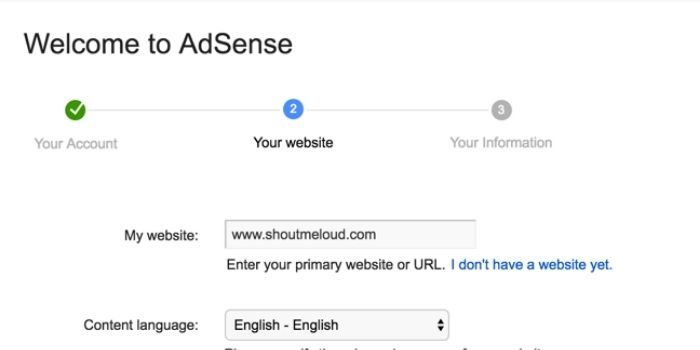
This is straightforward. Simply follow YouTube’s official AdSense account procedure.
Step four: Take a look at your new monetization options.

Each monetization channel has its own set of qualifying criteria. Consider the following example:
Step five: Participate in continuing reviews.
As a YouTube Partner, your channel will be held to a higher standard, according to YouTube. You must follow not just the YouTube Partner Program rules but also the Community Guidelines. Not to mention staying inside the confines of copyright laws.
2. Sell your own merchandise
Perhaps you consider yourself a content producer first and an entrepreneur second. (Keep in mind that even Drake has a t-shirt line.)
Alternatively, if you’re an entrepreneur first and a video maker second, you’ve most likely already created a product and are planning your YouTube marketing strategy to promote it.
In any case, selling products on YouTube is a realistic method to make money.
Step one: Create a prototype of your product.
Your channel’s merchandise should both symbolize and nurture your audience’s relationship with you. That implies your merchandise should be one-of-a-kind.
Pro tip: You might have more merchandise ideas than you can stock. So start with one or two items to dip your toes in the water. However, make certain that your audience is involved in the decision-making process.
Take a poll to find out what they desire. Alternatively, create excitement by releasing one-time goods in conjunction with significant subscriber-count milestones.
Step two: Your product should be sourced and/or built.
To create and transport your goods, you’ll almost always require a manufacturer, supplier, or wholesaler.
Some vendors will send it to you, while others will handle inventory, shipping, and returns for you, saving you time and money.
If you’re not sure where to begin, Shopify has a how-to on locating a brick-and-mortar company to help you realize your idea.
Step three: Create a shop and a landing page for your business.
To process purchases, you’ll need a second website. Refer to YouTube’s list of authorized merchandise sites if you wish to connect to it directly from your videos (which you should).
Step four: Activate the product shelf for your YouTube Partner.
YouTube Partners may now utilize the shelf function to sell goods associated with their channel. Follow YouTube’s instructions to activate it if you’re eligible.
Step five: In your videos, promote your product.
This is when your charm enters the picture. In your videos, wear or use your merch. Showcase viewers who have purchased and are using the product. (We would term this ‘user-generated content,’ or even ‘solid gold,’ if we were on another platform.)
Also, don’t forget to include end screens and cards with appealing calls to action, as well as a link to your store in your video descriptions.
Don’t forget to express gratitude. Because it’s a nice thing to do. But it’s also an occasion to remind folks about how amazing and popular your product is once again.
3. Create content that is sponsored

To be an influencer, you don’t have to be on Instagram. This strategy has the advantage of not requiring you to give YouTube a cut of your earnings. You deal with the brand directly, and they pay you directly. It’s no surprise that it’s a popular way for YouTubers to earn money.
Brands are likely to be interested in hearing from you if you have a large and/or engaged following and your material is relevant to their target market.
Step one: Look for a brand to collaborate with.
Quality is critical when it comes to the brands you deal with. Most likely, you already have a wish list of desirable brands. Make sure you refine your brand pitch before sending it, whether you’re shooting for the sky or building yourself up from the ground up.
Consider using an influencer marketing platform as well. These are websites that assist marketing teams in locating relevant influencers to collaborate with. For example, FameBit was one of the first to focus on YouTubers.
Step 2: Negotiate a deal
YouTube videos are, on average, the most expensive type of sponsored content brands can buy from influencers, according to a recent study by influencer marketing platform Klear.
Because video is more expensive to create, YouTube influencers may charge more for their videos than they do for Instagram Stories or Facebook posts.
While your pricing will vary depending on the size, engagement, and relevancy of your audience to your potential partner, you should know your worth before signing a deal.
Step three: Be open about the fact that your content is sponsored.
Advertisement is what sponsored content is. That means you’ll need to make sure you’re following Google’s advertising standards. If you’re American or British, you should be aware of the FTC (United States) and the ASA (United Kingdom) rules.
Transparency is beneficial not just to your legal health, but also to your audience’s connection with you. You can use YouTube’s visible disclosure feature to make sure your audience knows you’re advertising to them.
How to make a “sale” without irritating your audience
Many of the monetization techniques listed above include marketing items or campaigns.
However, you must ensure that your promotions do not jeopardize the quality of your material.
Many artists are concerned about “selling out.” However, if you never ask, you will never get it.
You may pick from a variety of “placements” to promote your items or campaigns.
In your videos, include a call to action.
“Please Like and Subscribe if you like this video.”
To increase their popularity, many YouTubers include a call to action along such lines at the end of their videos. Your audience is more likely to take the targeted action if you recommend it to them.
You may use this strategy to draw attention to a revenue-generating opportunity in front of your audience.
At key points in your videos, insert YouTube cards.
YouTube Cards are an eye-catching method to capture the attention of interested viewers, whether it’s as part of a contract with a company or to promote your own items.
To maximize their impact, you may schedule them to appear at exactly the perfect time, when they’re most important and least distracting.
To generate money on YouTube by engaging your audience, use well-timed YouTube cards in your videos.
In your video descriptions, provide links.
By including links in your video descriptions, you may direct viewers to your store, Patreon page, Kickstarter campaign, or other revenue-generating section of your website.
If you make videos promoting your own items and own or run a Shopify site, you may use buy X receive Y promos or discounts to entice new clients to buy your products.
Other platforms should be used to promote your offer.
Just because your material is posted on YouTube doesn’t imply you shouldn’t employ all of the other available distribution options.
Use Twitter, Facebook, and any other social media accounts you have to spread the news about new campaigns or offers.
The more locations your message appears, the more likely it is to be seen. As a result, using social media marketing to expand your audience outside YouTube is always a smart idea.
Conclusion
You may expand your YouTube channel by discovering and taking advantage of revenue growth possibilities that best match your channel’s specialty, purpose, and financial goals with ongoing effort and patience.



